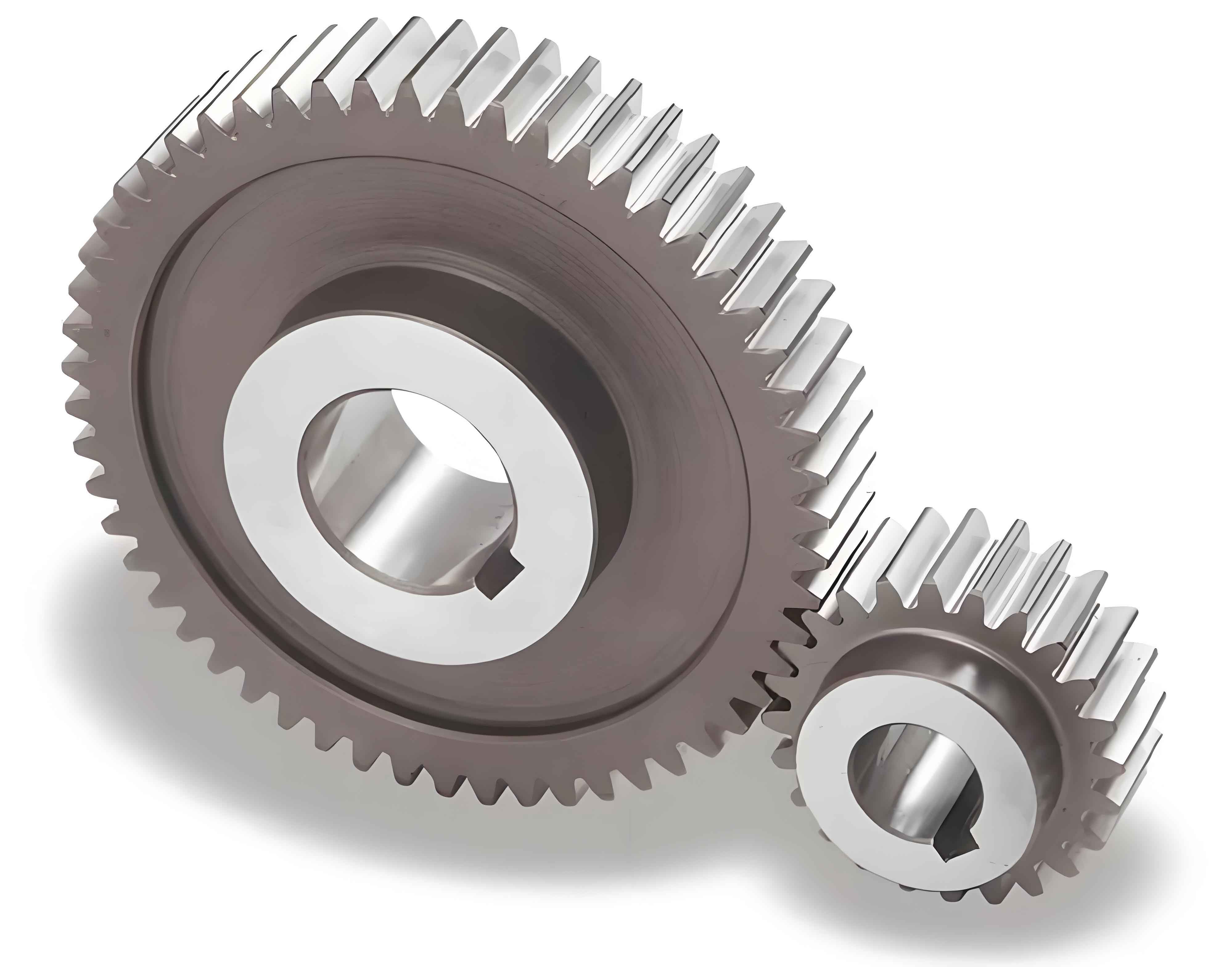In gear transmission systems, time-varying meshing stiffness (TVMS) is a critical parameter influencing dynamic performance, vibration characteristics, and fault diagnosis accuracy. This paper presents an enhanced analytical approach for calculating the TVMS of spur gears by modifying the traditional Ishikawa formula, incorporating gear body deformation effects through trapezoidal simplification.

1. Enhanced Ishikawa Method with Body Deformation
The improved model considers both tooth deformation and gear body flexibility through:
$$ \delta_{\Sigma} = \delta_1 + \delta_2 + \delta_{pv} + \delta_{\omega} $$
Where:
$\delta_{\omega}$ = Body deformation component
$\delta_{pv}$ = Contact deformation
2. Key Parameter Determination
Effective root circle radius calculation for spur gears:
$$ r_{F1} = \sqrt{r_{b1}^2 + (r_{b1} \tan \alpha_{a1} – B_1B_2)^2} $$
$$ r_{F2} = \sqrt{r_{b2}^2 + (r_{b2} \tan \alpha_{a2} – B_1B_2)^2} $$
| Parameter | Pinion | Gear |
|---|---|---|
| Module (mm) | 4.0 | 4.0 |
| Teeth | 25 | 33 |
| Pressure Angle (°) | 25 | 25 |
| Elastic Modulus (GPa) | 210 | 210 |
3. TVMS Formation Mechanism
For spur gears with contact ratio ε < 2:
$$ K_m = \begin{cases}
K_d & \text{(Double-tooth engagement)} \\
K_s & \text{(Single-tooth engagement)}
\end{cases} $$
4. Computational Verification
Comparison of three methods under different torques:
| Torque (Nm) | Method | Max Single-tooth Stiffness (N/μm) | Error vs FEM (%) |
|---|---|---|---|
| 30 | Original Ishikawa | 2.61 | 1.95 |
| Improved Method | 2.59 | 1.17 | |
| FEM | 2.56 | – | |
| 400 | Original Ishikawa | 2.79 | 3.33 |
| Improved Method | 2.75 | 1.85 | |
| FEM | 2.70 | – |
5. Dynamic Behavior Implications
The enhanced Ishikawa method reveals:
$$ \Delta K_{max} = 3.2\% \text{ at } 400\text{Nm} $$
Compared to 5.8% deviation in traditional method
6. Computational Efficiency
Time consumption comparison:
- Improved Ishikawa: 18.7s
- FEM: 4.2h
- Traditional Ishikawa: 15.3s
7. Conclusion
The modified Ishikawa method demonstrates superior accuracy in spur gear TVMS calculation while maintaining computational efficiency. Key advantages include:
- 1.85% maximum error vs FEM
- Consistent performance across torque ranges
- Effective integration of body deformation effects
$$ \delta_{\omega} = \frac{3F_n \cos \omega_x}{2Eb} \left[ \cos\left(\arcsin\frac{h_{Di}}{r_f}\right) \frac{\sqrt{r_f^2 – (s_F/2)^2} + h_x}{r_f} \right] $$
This approach enables precise dynamic modeling of spur gear systems while avoiding the computational burden of full FEM analysis, particularly beneficial for industrial applications requiring rapid stiffness evaluation.
